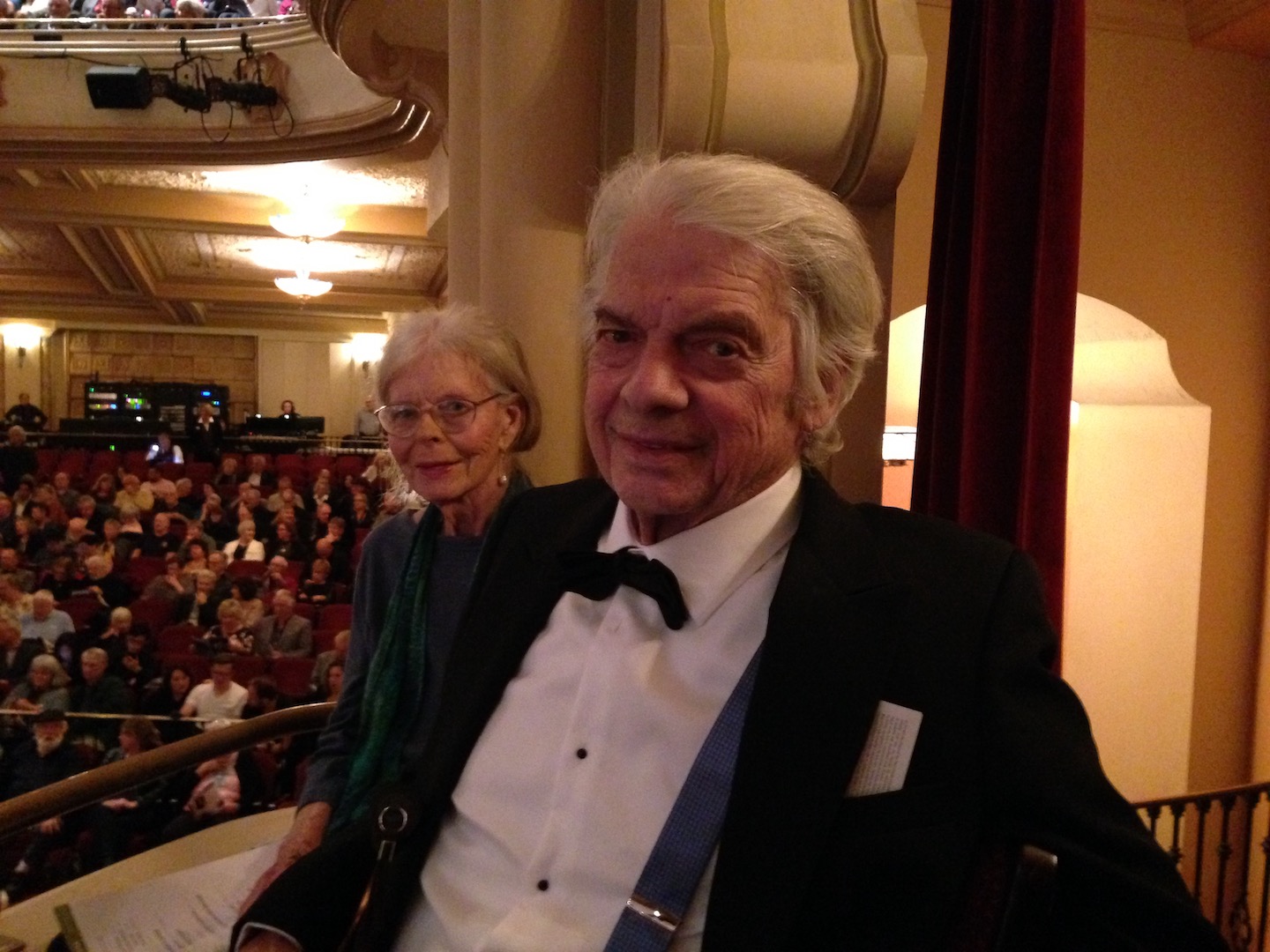
Robin, as he was always known, was born in Washington, D.C., on December 13, 1930, to Frank and Eugenia Frost. Our father, Frank Sr., was a retired business executive and philanthropist; he was also a skilled violist, talented enough to play Beethoven sonatas with members of the San Francisco Symphony. Robin was beginning to pick out tunes on the piano at four years old, and at six he began formal instruction.
The family migrated to Palo Alto, where he graduated from Palo Alto High in 1948. He was already an accomplished classical pianist and a talented jazz trumpet player. In 1948 he began practicing regularly with a young Dixieland garage band in the early days of the Dixieland revival. Musician friends of the family urged our mother to encourage his interest in composition, and he had begun conservatory study when he was diverted by a hurried marriage to his first wife, in Woods Hole, Massachusetts.
During the Korean War, Robin served in the Navy. On discharge in 1953, he moved to Santa Barbara with young son Peter — but no wife. He now resumed composition study with Eric Zeisl, an Austrian refugee composer who had been lured to Hollywood. Zeisl rejected the atonal experimenters in favor of an older, soulful romanticism with lush, sweeping chords –– Tchaikovsky, Debussy, Ravel –– which find echoes in Robin’s work.
In Los Angeles, Robin began gigging with pick-up bands and eventually on a permanent basis with the Dixieland band of Rosie McHargue. Robin performed both on piano and cornet, sometimes both at the same time, and wrote arrangements. About this time Robin met and enjoyed occasional gigs with lifelong friend Spencer Quinn, a banjo player who specialized in comic parodies of pop music clichés.
Hectic late-night jamming and the life of an itinerant musician became strains on Robin’s health and good nature. In 1961 he left L.A., and an overly frisky second wife, and eloped with his old friend Kay — Kathleen Ryan Frost — for the rest of his life.
Spencer had booked them an ambitious road tour in which they left an engagement in Miami and sped off to the next booking –– in Anchorage. Then, on to Montreal, where it turned out the club was mobbed up. They had to show up each night but not play. Dun’ ask.
It was a relief to return to Santa Barbara. During the next quarter century or so, Robin split his time between composing at home, gigging with Dixieland old boys in lower State dives, now and then dressing up to play the piano at the Plow and Angel or the Bistro Sunday jam.
This period saw his quirky, hilarious creation of eight-track recordings on which he played all the instruments himself and composed Spencer Quinn–inspired songs, words and music evoking a flapper-era band on acid: “I’ll Never Forget What’s-Her-Name” and “Just a Vagabond” –– “I will be waiting, for mating, with you. I’m just a vagabond, I’ve got those Vladivostok towers in view.” Original, crazy, and impeccable, swinging roaring-twenties instrumental background.
The high point of this period came with an invitation to write and score music for John Houseman’s revival of Burlesque, with Ann Francis, at UCLA. Robin’s “Overture” out-overtured any introductory tune ever written and had the audience dancing in the aisles before the curtain went up.
But during these years Robin discovered a new talent: teaching the young. At Marymount, as Erin Graffy remembers, and St. Anthony’s, he taught a generation the basics of music and how it should sound in a funny, conversational, anecdotal way. At Christmas, as he conducted a choir of sweet young voices in his arrangments of “Send in the Clowns” or “Where Is Love?” from Lionel Bart’s Oliver, there wasn’t a dry eye in the audience.
Robin’s tastes in music were strict and exclusive. He could play by memory virtually any lick by Fats Waller, Louie, or Bix, but he barely acknowledged Dizzy and ignored Chet Baker and an entire generation of beboppers. Gershwin was his idol from the first time he heard “Rhapsody in Blue” as a child; he mastered the piano version of Concerto in F at an early age. Robin would point out how the composer, even in pop tunes, would always score the exactly right notes rather than tired conventions.
His own classical compositions, on which he worked at a leisurely rate, evoked Zeisl’s romanticism. He admired Schoenberg but resisted atonality, and he was sometimes influenced by contemporary American composers, like Roy Harris and Aaron Copland. In Robin’s performed works one can now and then detect a Coplandish hoedown clodhopping along in the background.
Robin was almost pathologically modest and allergic to self-promotion. His friend, the masterful violinist Gilles Apap, finally spurred Robin to complete his violin concertino, which had been maturing in a drawer for years. It was finally performed by the Santa Barbara Symphony with Gilles as the soloist in 2011. Robin was associated with the Symphony since his youth and served on its board for some time. The Symphony performance of “Opus One,” was followed a few years later by his Piano Concerto in E flat, with the splendid Natasha Kislenko as soloist.
Robin gave up performing himself in later years, preferring to play his piano at home on a regular basis, often sight-reading his way through the works of the Great American Songbook composers, Gershwin first of all but many others as well. On his piano the day after he died, I found the Kurt Weill songbook, opened to “Listen to my Song” from the Broadway musical Johnny Johnson. It may have been the last piece he played.
No public service is planned and kind people offering donations can contact the Santa Barbara Symphony.
